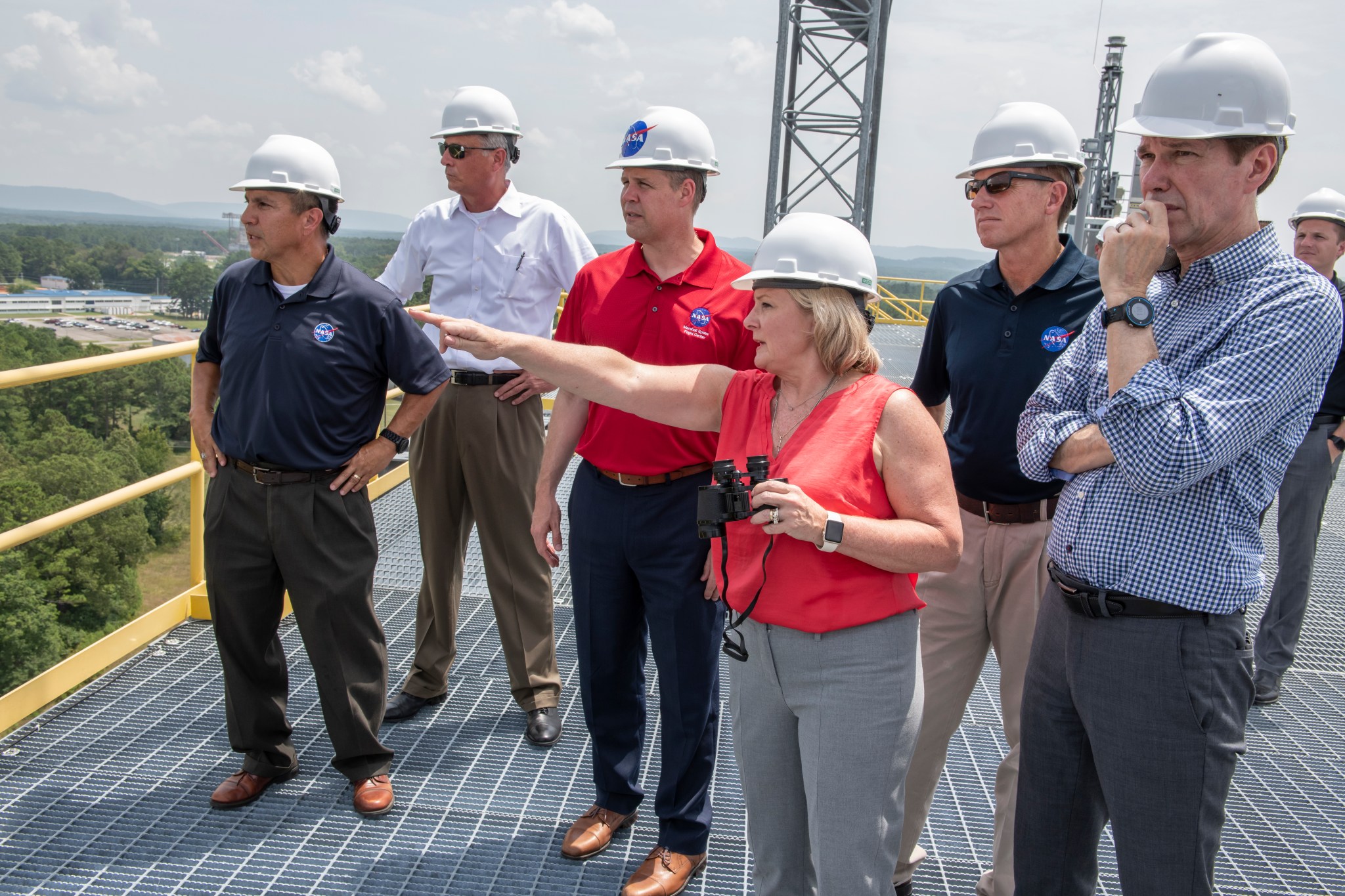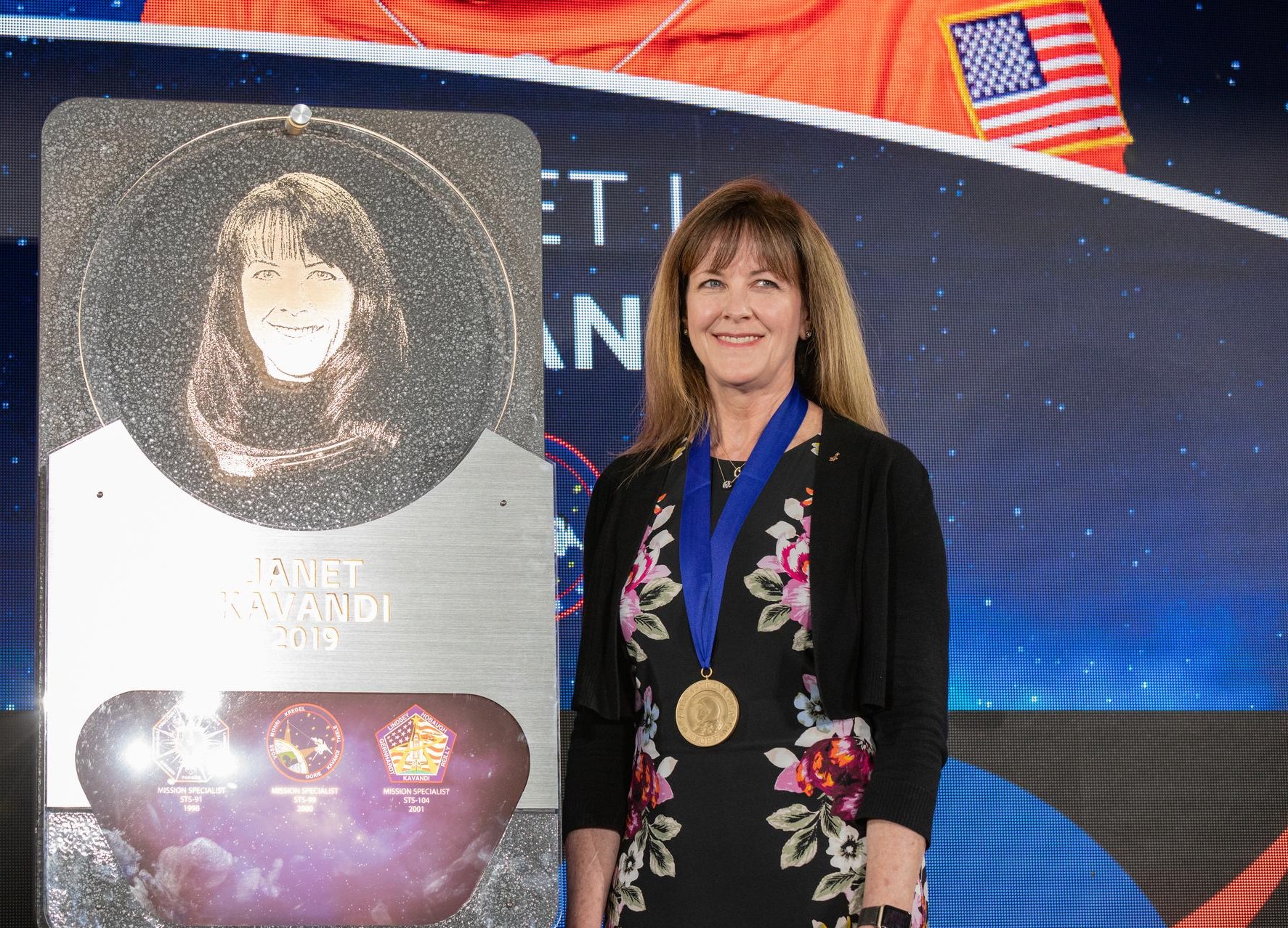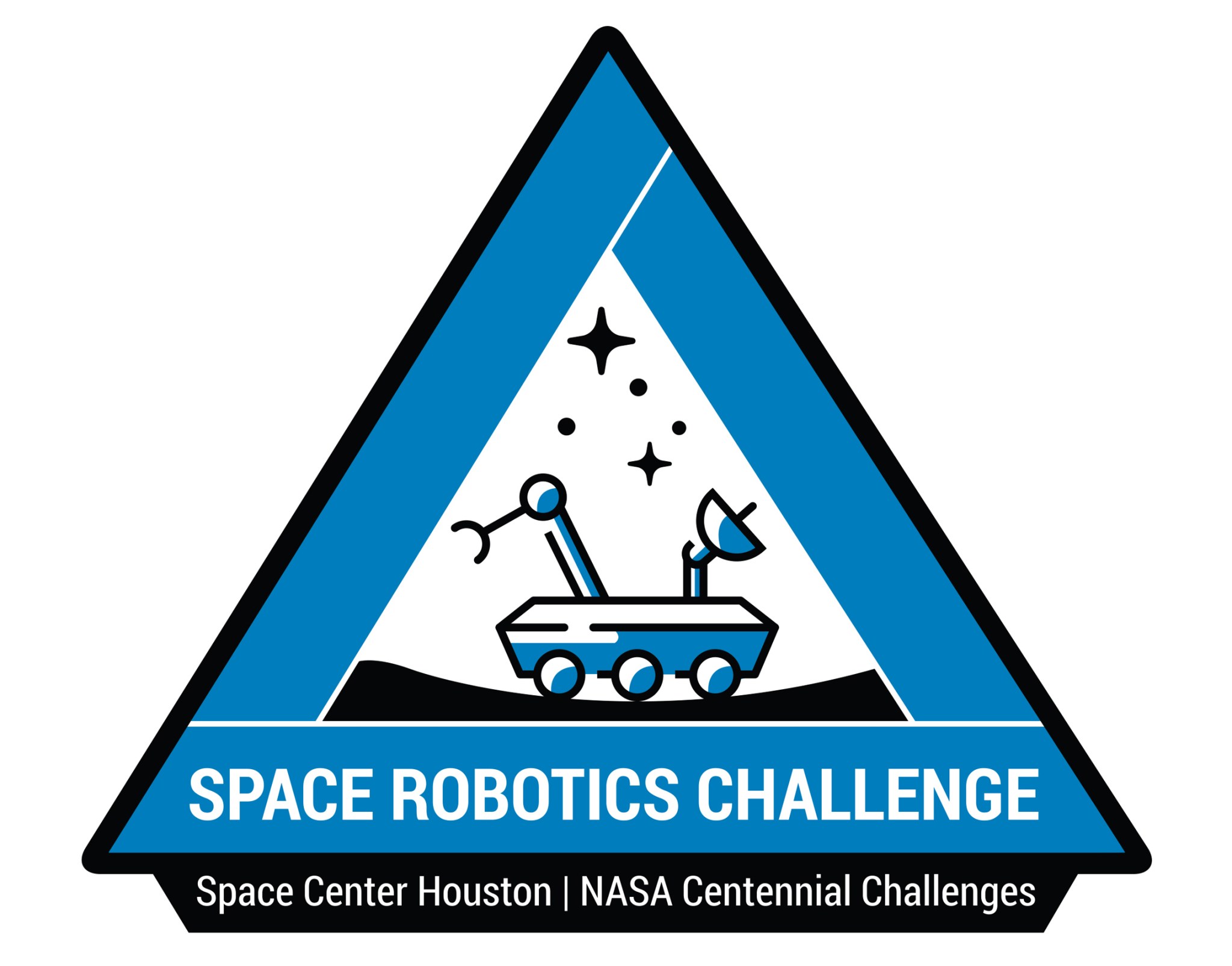In This Week’s Star
- NASA Administrator Bridenstine to Visit Marshall, Hold All-Hands
- Glenn Center Director Janet Kavandi to Speak at Marshall on Aug. 15
- NASA Wants Public’s Help Developing Autonomous Rovers
- Cloaked Black Hole Discovered in Early Universe Using NASA’s Chandra
- Marshall Center Chief Technologist John Dankanich to Deliver Tech Talk on Aug. 16
- Marshall Summer Interns Present Final Projects at Poster Exposition
- Marshall Team ‘Stuffs the Truck’ for Feds Feed Families Campaign
- Marshall Showcases Artemis Capabilities, Technologies at SMD Symposium
- This Week in NASA History: The First Saturn Rocket Arrives at Kennedy – Aug. 15, 1961
NASA Administrator Bridenstine to Visit Marshall, Hold All-Hands
By Will Bryan
NASA Administrator Jim Bridenstine will hold an all-hands meeting in Morris Auditorium at NASA’s Marshall Space Flight Center at 3 p.m. on Aug. 16. Following his remarks, he will take questions from the Marshall team.
Bridenstine is visiting Marshall to discuss its vital role in the Artemis program including the progress on the powerful Space Launch System rocket that will send Artemis missions to the Moon and many other contributions the center is making to these historic lunar missions.
NASA is working to land the first woman and the next man on the Moon by 2024.
Marshall will provide NASA with the only rocket capable of sending humans to the Moon, the propulsion for the launch abort system, critical components for the Gateway, the ability to land on the Moon’s south pole with a human landing system and the life support systems to keep astronauts healthy during their travels. Without Marshall’s contributions to the Artemis program, there can be no safe, sustainable human exploration of the Moon and Mars.
Bridenstine’s visit to Marshall will come the day after he visits NASA’s Michoud Assembly Facility, which is managed by Marshall.
Bryan, an ASRC Federal/Analytical Services employee, supports the Office of Strategic Analysis & Communications.
Glenn Center Director Janet Kavandi to Speak at Marshall on Aug. 15
Janet Kavandi, director of NASA’s Glenn Research Center, will deliver the latest “Mission Success is in Our Hands” lecture Aug. 15 at 11:30 a.m. in Building 4200’s Morris Auditorium.
Kavandi will share insights on her career as an astronaut, post-flight leadership roles within NASA and goals as director of Glenn. She will present her center’s “7 Expected Behaviors” and how they contribute to mission safety and success.
There will also be a discussion about how learning from the past allows NASA to meet the challenges of the agency’s new missions and next history-making chapters.
NASA Wants Public’s Help Developing Autonomous Rovers
Autonomous robots will assist future astronauts during long-duration missions to other worlds by performing tedious, repetitive and even strenuous tasks. These robotic helpers will let crews focus on the more meticulous areas of exploring.
To help achieve this, NASA’s Centennial Challenges program — managed by NASA’s Marshall Space Flight Center — and Space Center Houston of Texas, opened the second phase of the NASA Space Robotics Challenge. This virtual challenge aims to advance autonomous robotic operations for missions on the surface of distant planets or moons.
“We believe the public has ideas that can help us advance the state-of-the-art in autonomous robotic operations on planetary surfaces,” said Jim Reuter, associate administrator for NASA’s Space Technology Mission Directorate. “The first phase of this competition demonstrated teams could create sophisticated autonomous software, and this second phase will push teams to pair those capabilities with tasks that will be critical to exploring the Moon and Mars.”
Phase 2 invites competitors from the public, industry and academia to develop code for a team of virtual robots that will support a simulated in-situ resource utilization (ISRU) mission for the Moon. ISRU involves gathering and using materials found locally on other worlds. The challenge requires participants to develop software that will advance technologies needed for fully autonomous operations, navigation and decision-making capabilities on the lunar surface. It will be divided in two rounds: the qualification round and final competition. Prior participation in Phase 1 is not a requirement to participate in Phase 2 of the competition.
For the qualification round, teams will be given three tasks to complete within a simulation representing a capability needed to execute an autonomous ISRU mission. The top 25 teams that meet minimum scoring requirements will be awarded prizes from a $375,000 prize purse. They will also be invited to participate in the competition round.
The competition round will require teams to build upon their software to demonstrate autonomous operations over a long-term ISRU mission. Up to 10 top scoring teams will be awarded prizes from a $625,000 prize purse according to their final scores. The software developed will be tested on robotic systems within a simulated lunar environment.
Phase 1 of the challenge concluded in June 2017 and focused on NASA’s R5 humanoid robot operating in a virtual Mars environment. It consisted of two challenge rounds and tasked competitors with advancing the capabilities of humanoid robot dexterity to better enable robots to work alongside, and independent of, astronauts.
Space Center Houston is working with NASA to help design and execute the competition. Space Center Houston is a Smithsonian affiliate non-profit and the space museum functions as the official visitor center for NASA’s Johnson Space Center.
Centennial Challenges, part of the prizes and challenges portfolio within NASA’s Space Technology Mission Directorate, offers incentive prizes to generate revolutionary research and technology solutions to problems of interest to NASA and the nation.
Cloaked Black Hole Discovered in Early Universe Using NASA’s Chandra
Astronomers have discovered evidence for the farthest “cloaked” black hole found to date, using NASA’s Chandra X-ray Observatory – a program managed by NASA’s Marshall Space Flight Center. At only about 6% of the current age of the universe, this is the first indication of a black hole hidden by gas at such an early time in the history of the cosmos.
Supermassive black holes, which are millions to billions of times more massive than our Sun, typically grow by pulling in material from a disk of surrounding matter. Rapid growth generates large amounts of radiation in a very small region around the black hole. Scientists call this extremely bright, compact source a quasar.
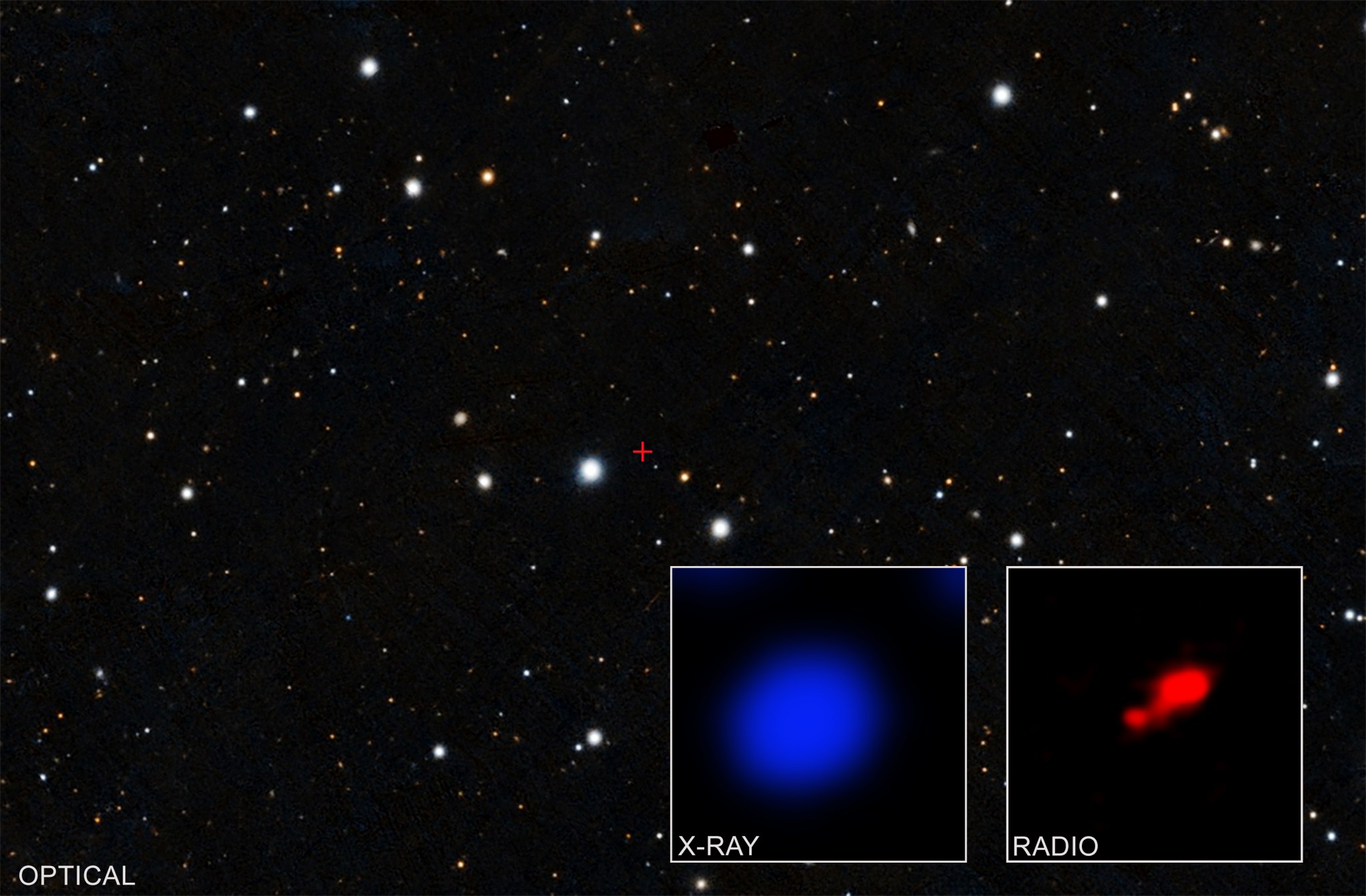
The large image shown here is from the optical Pan-STARRS survey. The image on the left contains X-rays detected with Chandra from a small, central region (marked with a red cross) of the optical field. In the middle is the quasar PSO167-13, which was first discovered with Pan-STARRS. Optical observations from these and other surveys have resulted in the detection of about 200 quasars that, like PSO167-13, were already shining brightly when the universe was less than a billion years old, or about 7 percent of its present age. On the right, the image shows the same field of view as seen by the Atacama Large Millimeter Array (ALMA) of radio dishes in Chile. The bright source is the quasar and a faint, nearby companion galaxy is seen to the lower left.
Many black holes, especially in the early Universe, are expected to be veiled by thick clouds of gas and dust. These are known as “obscured” black holes. This cocoon of material makes it more difficult to find and identify these black holes because it blocks much of the light that is emitted from the region around the black hole.
Astronomers think that most of the early growth of black holes occurs while the black hole and disk are strongly obscured. The cocoon of material feeds into the disk, and as the black hole grows, the gas in the cloud is depleted until the black hole and its bright disk are uncovered.
Optical light surveys are generally only considered effective at finding unobscured black holes, because the radiation they detect is suppressed by even thin clouds of surrounding gas and dust. Therefore, researchers expected that PSO167-13 would be unobscured.
However, Chandra’s unique ability to accurately record X-rays and their positions showed the PSO167-13 was different. After 16 hours of observation only three X-ray photons were detected from PSO167-13, all with relatively high energies. Low energy X-rays are more readily absorbed than higher energy ones, so the likely explanation for the Chandra observation is that the quasar is highly obscured by gas, allowing only high energy X-rays to be detected.
If confirmed, PSO167-13 beats the previous record-holder for an obscured quasar by approximately half a billion years.
A paper describing these results led by Fabio Vito of of Pontificia Universidad Católica de Chile was published in Astronomy and Astrophysics on August 8th and is available online. NASA’s Marshall Space Flight Center manages the Chandra program. The Smithsonian Astrophysical Observatory’s Chandra X-ray Center controls science and flight operations from Cambridge, Mass. Credits: X-ray: NASA/CXO/Pontificia Universidad Catolica de Chile/F. Vito; Radio: ALMA (ESO/NAOJ/NRAO); optical: Pan-STARRS
According to current theories, a dense cloud of gas feeds material into the disk surrounding a supermassive black hole during its period of early growth, which “cloaks” or hides much of the quasar’s bright light from our view. As the black hole consumes material and becomes more massive, the gas in the cloud is depleted, until the black hole and its bright disk are uncovered.
“It’s extraordinarily challenging to find quasars in this cloaked phase because so much of their radiation is absorbed and cannot be detected by current instruments,” said Fabio Vito, CAS-CONICYT Fellow at the Pontificia Universidad Católica de Chile, who led the study. “Thanks to Chandra and the ability of X-rays to pierce through the obscuring cloud, we think we’ve finally succeeded.”
The new finding came from observations of a quasar called PSO167-13, which was first discovered by Pan-STARRS, an optical-light telescope in Hawaii. A paper describing the new findings is available online.
Optical observations from these and other surveys have detected about 200 quasars already shining brightly when the universe was less than a billion years old, or about 7% of its present age. These surveys were only considered effective at finding unobscured black holes, because the radiation they detect is suppressed by even thin clouds of gas and dust. Since PSO167-13 was part of those observations, this quasar was expected to be unobscured, too.
Vito’s team tested this idea by using Chandra to observe PSO167-13 and nine other quasars discovered with optical surveys. After 16 hours of observation, only three X-ray light photons were detected from PSO167-13, all with relatively high energies. Since low-energy X-rays are more easily absorbed than higher energy ones, the likely explanation is that the quasar is highly obscured by gas, allowing only high-energy X-rays to be detected.
“This was a complete surprise,” said co-author Niel Brandt of Penn State University in State College, Pennsylvania. “It was like we were expecting a moth but saw a cocoon instead. None of the other nine quasars we observed were cloaked, which is what we anticipated.”
An interesting twist for PSO167-13 is that the galaxy hosting the quasar has a close companion galaxy, visible in data previously obtained with the Atacama Large Millimeter Array of radio dishes in Chile and NASA’s Hubble Space Telescope. Because of their close separation and the faintness of the X-ray source, the team was unable to determine whether the newly discovered X-ray emission is associated with the quasar PSO167-13 or with the companion galaxy.
If the X-rays come from the known quasar, astronomers need to develop an explanation for why the quasar appeared highly obscured in X-rays but not in optical light. One possibility is that there has been a large and rapid increase in cloaking of the quasar during the three years between when the optical and X-ray observations were made.
On the other hand, if the X-rays arise from the companion galaxy, it represents the detection of a new quasar in close proximity to PSO167-13. This quasar pair would be the most distant yet detected.
In either case, the quasar detected by Chandra would be the most distant cloaked one yet seen, at 850 million years after the Big Bang. The previous record holder was observed 1.3 billion years after the Big Bang.
The authors plan to follow up with additional observations to learn more.
The Smithsonian Astrophysical Observatory’s Chandra X-ray Center in Cambridge, Massachusetts, controls Chandra’s science and flight operations.
Marshall Center Chief Technologist John Dankanich to Deliver Tech Talk on Aug. 16
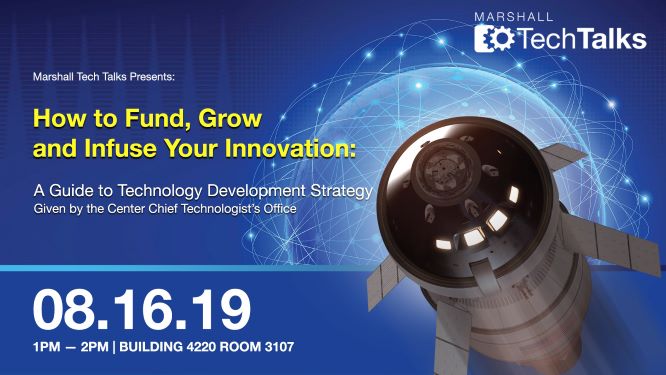
John Dankanich, center chief technologist at NASA’s Marshall Space Flight Center, will deliver the monthly Tech Talk on Aug. 16 at 1 p.m. in Room 3107 in Building 4220. He will focus on best practices and tools to develop new, innovative technology, including the various funding mechanisms, how to engage management and how to prepare new technology for advanced stages. Dankanich will also discuss Marshall’s technology portfolio and how the center is positioning itself for the future of space exploration. Tech Talk is presented by the Marshall Center Chief Technologist’s Office. (NASA)
Marshall Summer Interns Present Final Projects at Poster Exposition
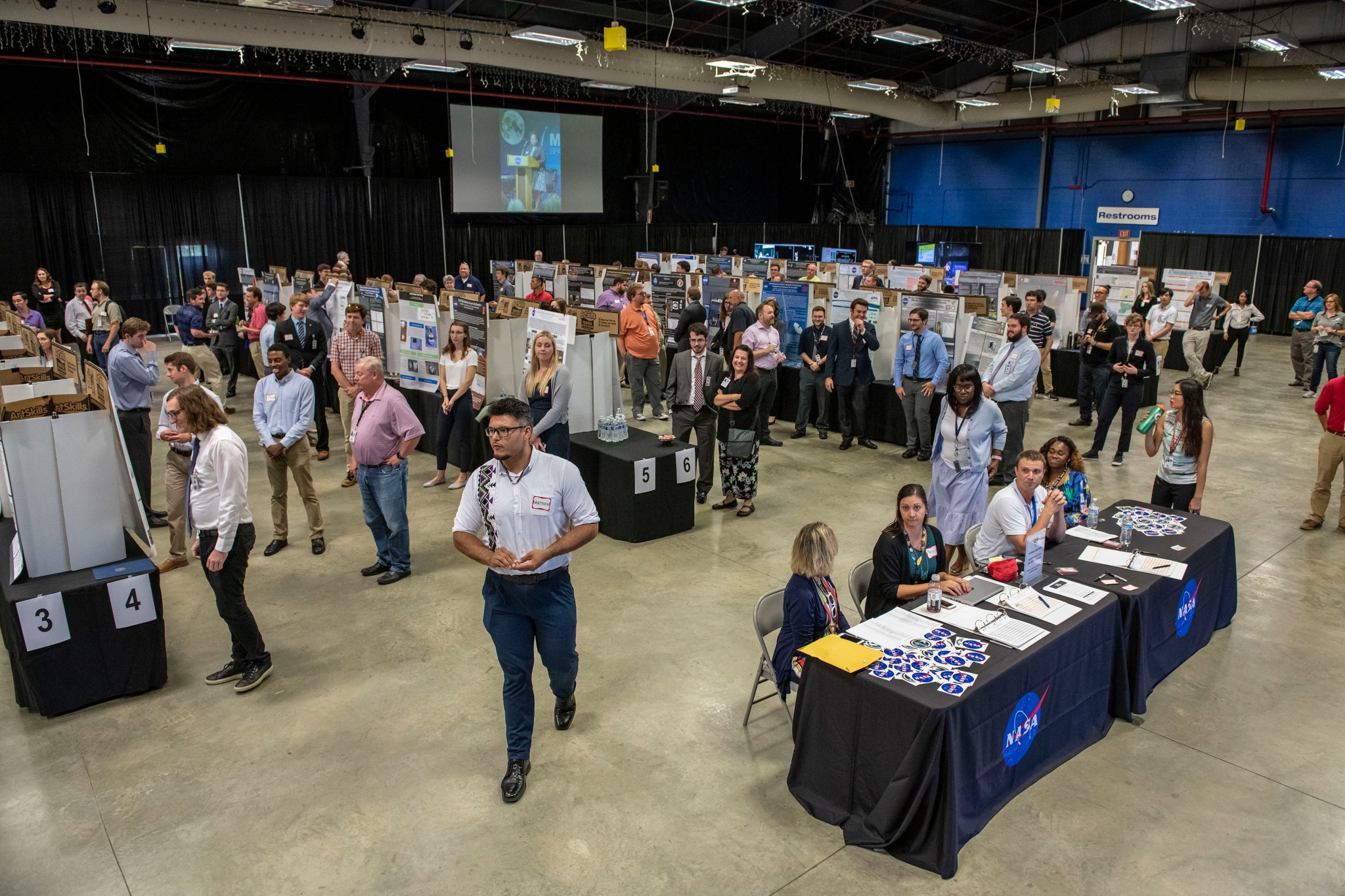
Summer interns at NASA’s Marshall Space Flight Center display posters representing their completed NASA projects during the Intern Poster Exposition on Aug. 7 in Activities Building 4316. The exposition, which wrapped up the summer internship term, featured presentations from 93 students. Marshall team members spent the afternoon getting to know the interns, viewing the students’ posters and learning about their work experiences. (NASA/Fred Deaton)
Marshall Team ‘Stuffs the Truck’ for Feds Feed Families Campaign
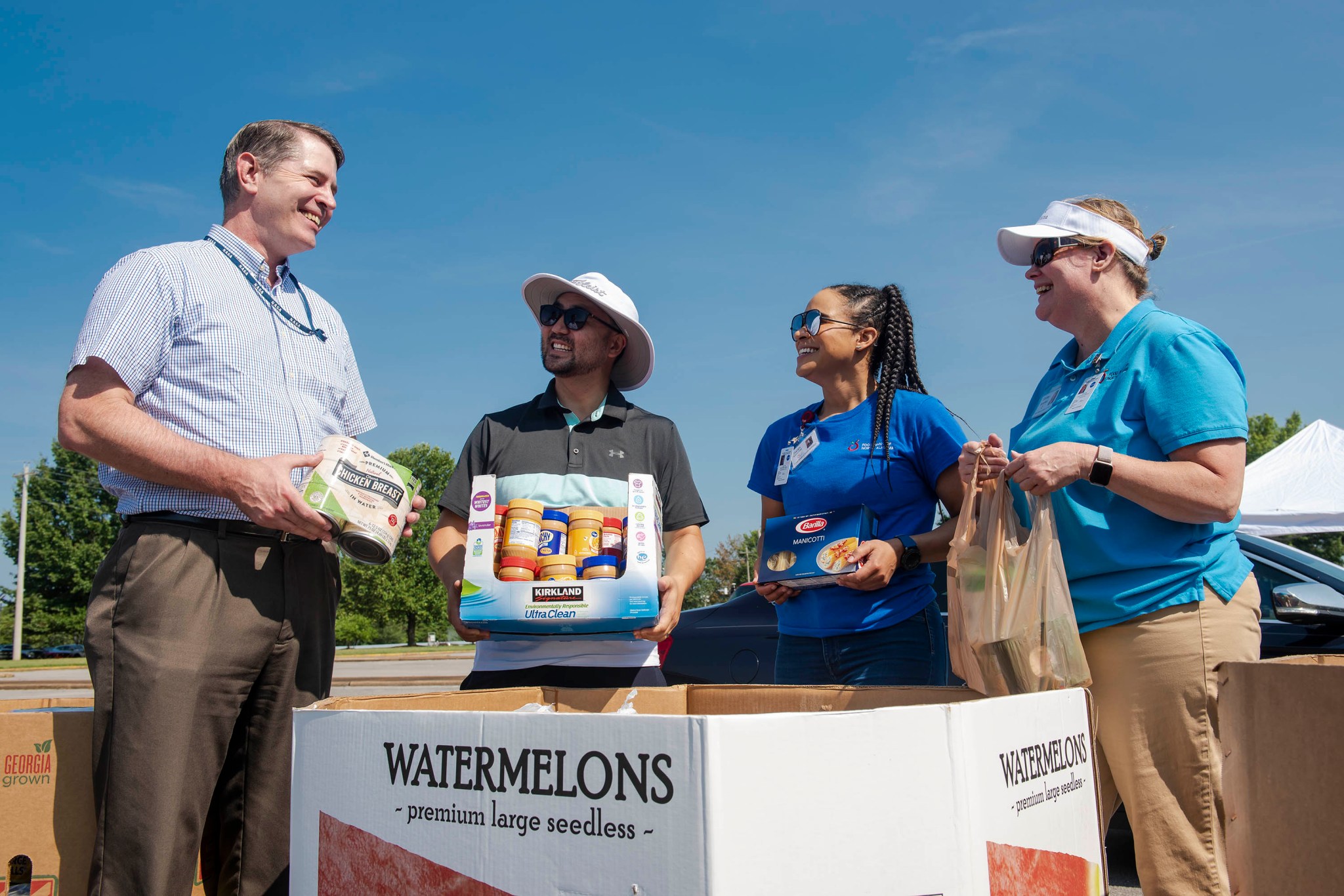
David Burns, left, manager of the Science and Technology Office at NASA’s Marshall Space Flight Center, takes part in Marshall’s “Stuff the Truck” campaign Aug. 7 to collect canned and nonperishable food items for the 2019 Feds Feed Families food drive. Also collecting donations are, from second left, Marshall human resources specialist Mat Park, a campaign organizer; and Sarah Bensinger and Shirley Schofield, agency/community relations manager and executive director, respectively, of the Food Bank of North Alabama, Marshall’s campaign partner. The drive collected 14,263 pounds of food items — more than 10,000 meals. Celebrating its 10th anniversary this year, the Feds Feed Families program was founded to help stock food banks and pantries nationwide during summer months. To date, federal employees and contractors have collected more than 80 million pounds of food for the campaign. (NASA/Charles Beason)
Marshall Showcases Artemis Capabilities, Technologies at SMD Symposium
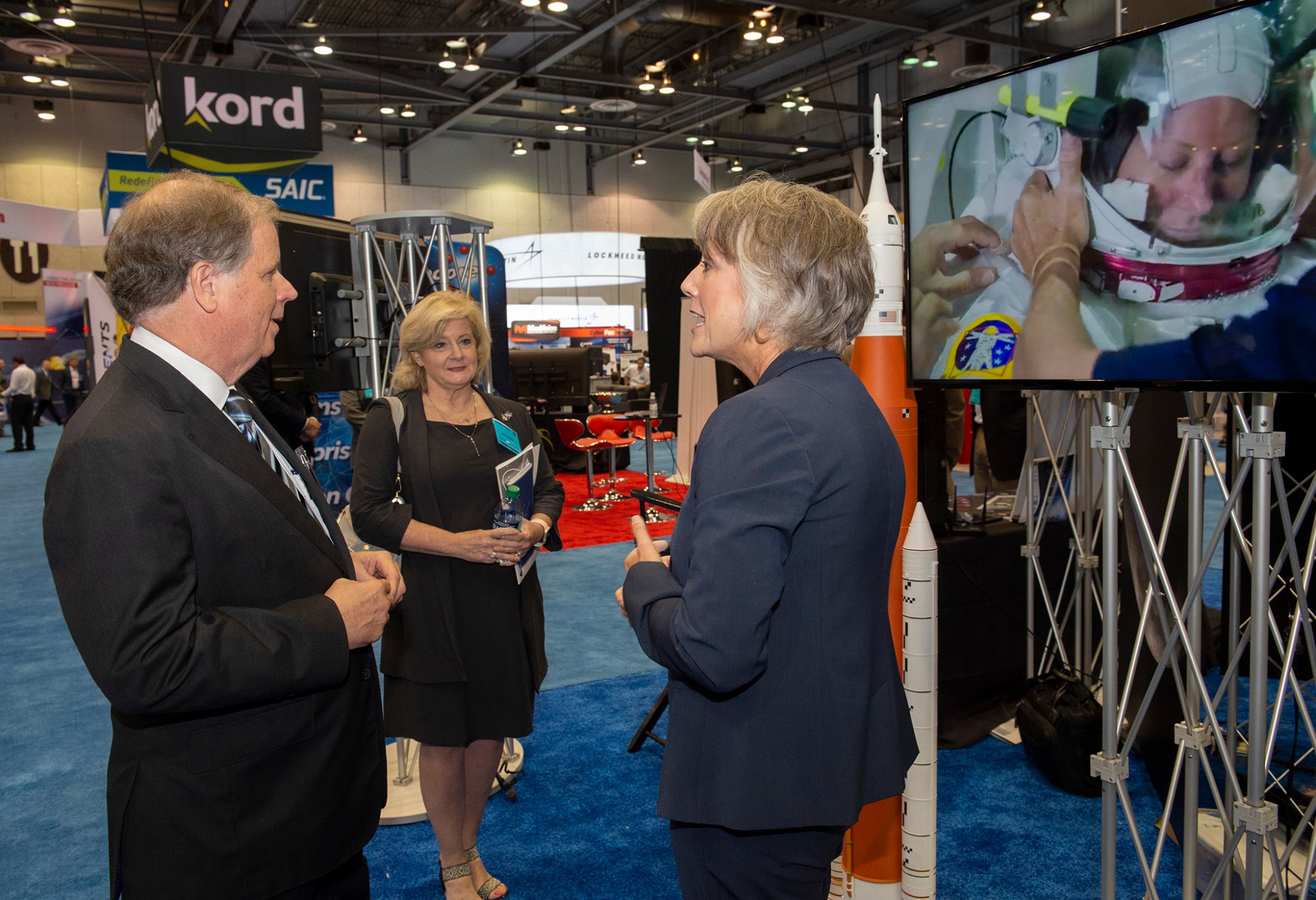
U.S. Sen. Doug Jones of Alabama, left, and NASA’s Marshall Space Flight Center Director Jody Singer, center, talk with Marcia Lindstrom, strategic communications manager for NASA’s Space Launch System at Marshall, on Aug. 7 during the annual Space & Missile Defense Symposium at the Von Braun Center in Huntsville. The SLS is the world’s most powerful rocket, and will be the backbone for deep space exploration as NASA’s Artemis program advances. (NASA/Emmett Given)
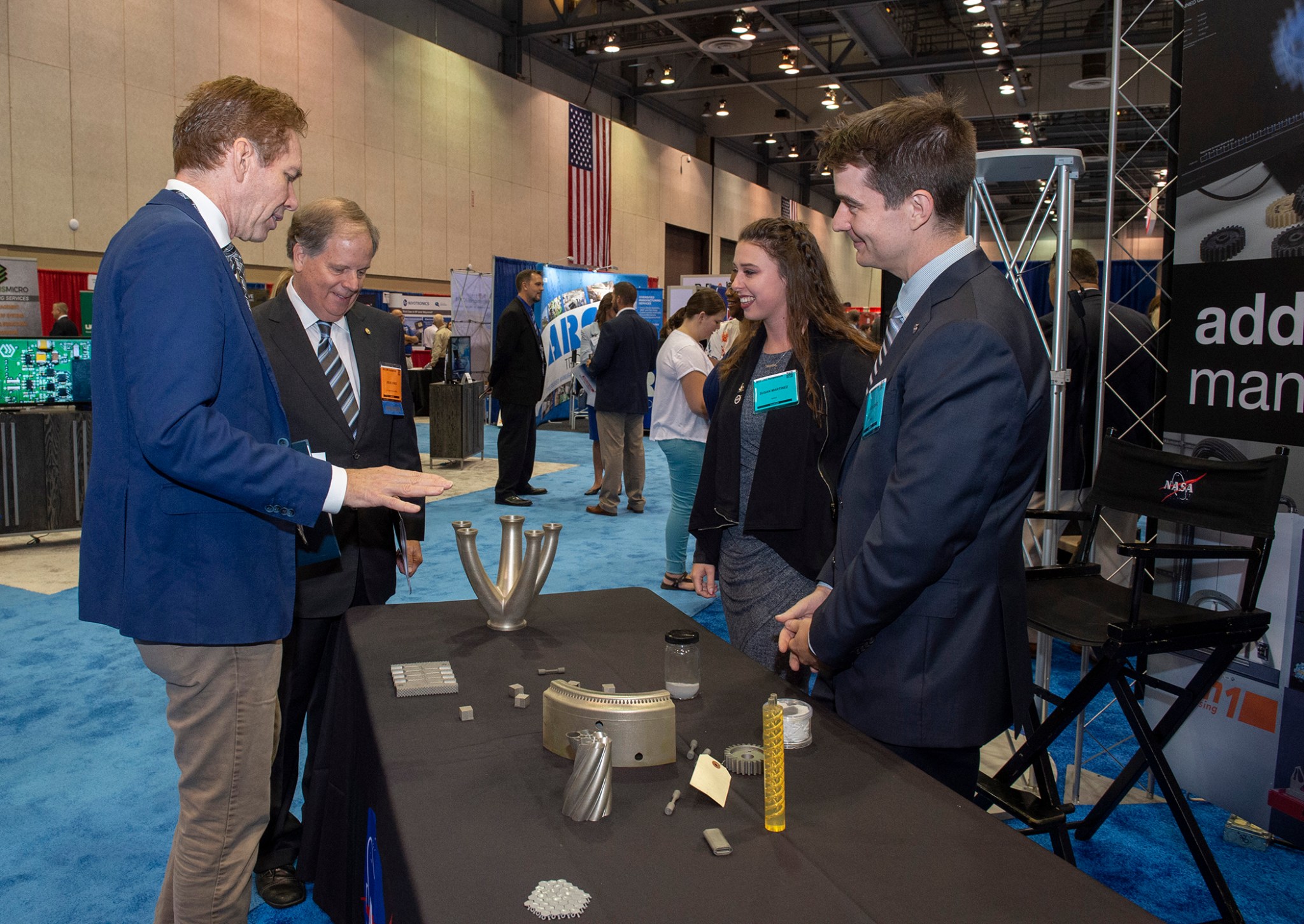
Marshall Deputy Director Paul McConnaughey, left, discusses advanced manufacturing capabilities with Jones, second from left. A NASA exhibit, staffed by Marshall materials engineers Susan Barber, second from right, and Zack Jones, right, showcased some of the technologies, missions and hardware that will help enable humans to return to the Moon through the agency’s Artemis program. (NASA/Emmett Given)
This Week in NASA History: The First Saturn Rocket Arrives at Kennedy – Aug. 15, 1961
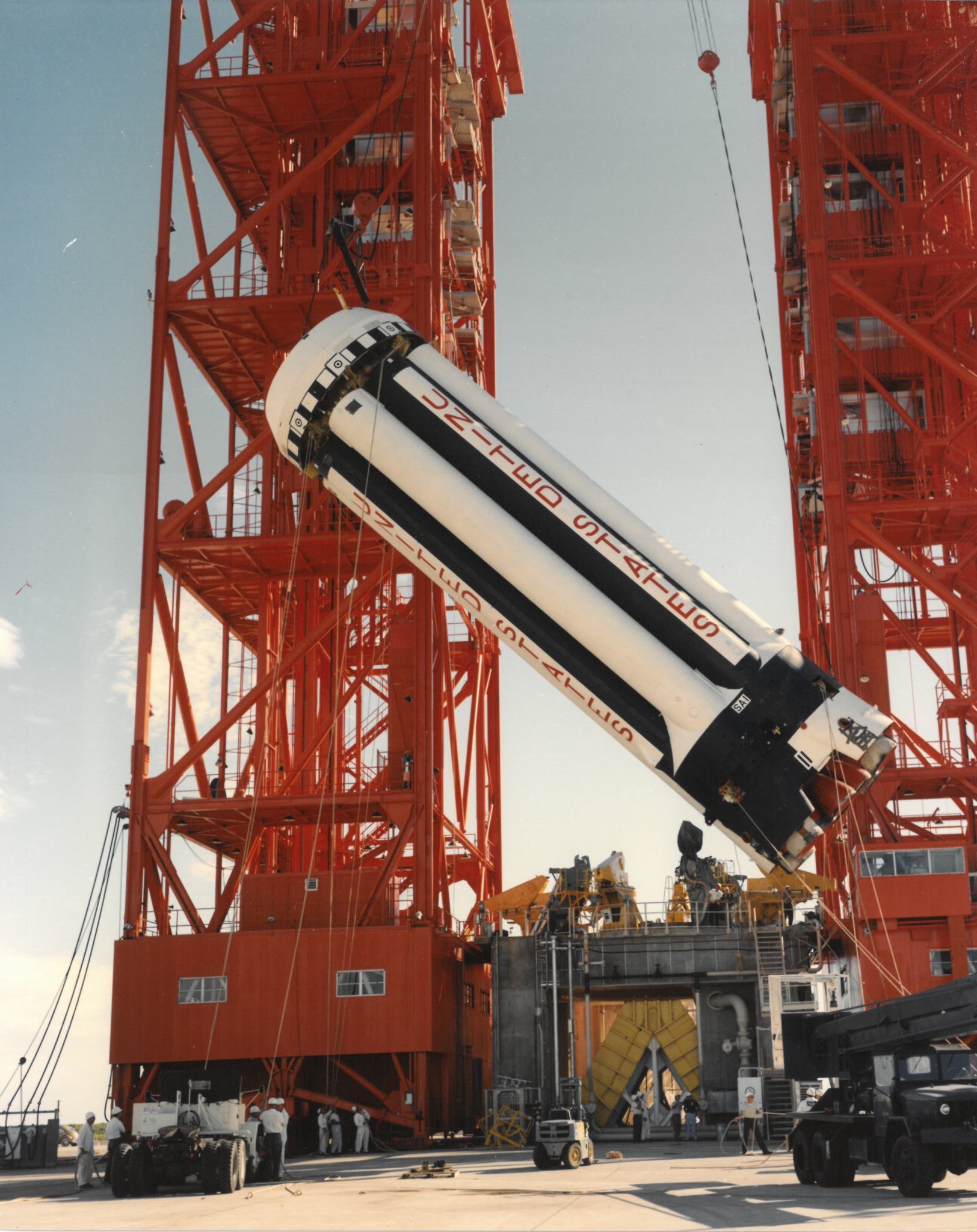
This week in 1961, the first Saturn I rocket, SA-1, arrived at NASA’s Kennedy Space Center. The SA-1 mission was used to demonstrate the validity of the clustered engine concept as well as test the aerodynamic and structural design of the Saturn I booster. The dummy second stage was ballasted with 11,000 gallons of water and a dummy third stage was ballasted with 12,000 additional gallons of water. Here, the booster stage of the SA-1 is erected on the pad for its Oct. 27, 1961, launch. NASA’s Marshall Space Flight Center designed, developed and managed the production of the Saturn family of rockets that took astronauts to the Moon. Today, Marshall is developing NASA’s Space Launch System, the most powerful rocket ever built, capable of sending astronauts to the Moon, Mars and deeper into space than ever before. The NASA History Program is responsible for generating, disseminating and preserving NASA’s remarkable history and providing a comprehensive understanding of the institutional, cultural, social, political, economic, technological and scientific aspects of NASA’s activities in aeronautics and space. For more pictures like this one and to connect to NASA’s history, visit the Marshall History Program’s webpage. (NASA)





























